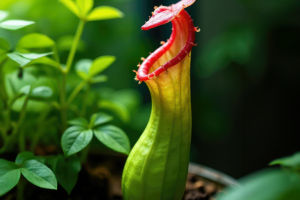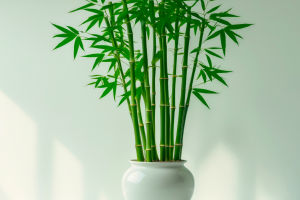When you think of beautiful flowers, you might picture a garden filled with vibrant colors and delightful fragrances. However, nature has its own way of surprising us, and one such marvel is the Rafflesia arnoldii, also known as the "corpse flower."
This remarkable plant holds the title of the largest single flower in the world, with its bloom reaching over 1 meter in diameter.
But don't be fooled by its size and appearance—the Rafflesia arnoldii is infamous for its foul odor, which is described as the smell of rotting flesh.
In this article, we'll explore the fascinating characteristics of the Rafflesia arnoldii, why it's called the "corpse flower," and why its bloom is both rare and fleeting. Despite its unpleasant scent, this flower holds a unique place in the botanical world, captivating those who are lucky enough to witness its brief yet spectacular flowering.
What is the Rafflesia arnoldii?
The Rafflesia arnoldii is a flowering plant that belongs to the Rafflesiaceae family. Native to the rainforests of Southeast Asia, particularly in countries like Indonesia and Malaysia, this plant is known for its massive bloom. Unlike most plants, the Rafflesia arnoldii doesn't have visible stems, leaves, or roots. Instead, it exists as a parasitic plant, attaching itself to a host vine in the Tetrastigma genus.
The plant's flower is its most notable feature. When in bloom, it is a sight to behold: the large, leathery petals are usually a deep reddish-brown, dotted with white spots. The flower itself is so large that it can weigh up to 11 kilograms and can be up to 1.5 meters in diameter, which makes it the largest single flower in the world. Despite its size, the Rafflesia arnoldii has a relatively short lifespan, with each flower blooming for only a few days.
The Stench of the Bloom
One of the most infamous aspects of the Rafflesia arnoldii is its smell. As its nickname suggests, the "corpse flower" produces an odor that many compare to rotting meat or decomposing flesh. This stench is not just unpleasant—it is a strategic adaptation that plays a vital role in the flower's reproduction process.
The foul smell of the Rafflesia arnoldii is what attracts its primary pollinators: carrion flies. These flies are naturally drawn to the scent of decaying matter, and the Rafflesia arnoldii uses this to its advantage. The flies are tricked into visiting the flower under the impression that it is a carcass, and in doing so, they inadvertently transfer pollen from one bloom to another, helping the plant reproduce.
While the scent is highly off-putting to humans and many animals, it serves as an essential tool for the survival of the species. In this case, what seems unpleasant to us is precisely what ensures the flower's continued existence.
Why is It So Rare?
The Rafflesia arnoldii is not just rare because of its size or smell; it is also rare because of how infrequently it blooms. Unlike many flowers that bloom regularly, the Rafflesia arnoldii has an unpredictable flowering cycle. A single flower only blooms for about 3 to 5 days, and it may only bloom once every several years. This brief blooming period makes it incredibly difficult to catch a glimpse of the flower in full bloom, which only adds to its mystique and allure.
Additionally, the plant's parasitic nature makes it challenging to cultivate. It relies on a specific host vine, Tetrastigma, to grow, and finding the right conditions for it to bloom is no easy task. As a result, the flower's blooming is a rare event that draws attention from botanists, photographers, and curious onlookers alike.
The Lifecycle of the Corpse Flower
The life cycle of the Rafflesia arnoldii is a curious one. The plant starts as a small bud and takes months, sometimes even years, to mature into a full flower. Once the flower blooms, it typically lasts for a very short period, as mentioned earlier—only a few days—before wilting and decaying.
After the flower wilts, it decomposes quickly, leaving behind the characteristic smell that earned it the "corpse flower" name. The cycle then begins again with the plant's tiny bud, waiting for the right conditions to mature and bloom once more.
This short blooming period and long gestation time only increase the flower's mystique. When you do get the chance to see a Rafflesia arnoldii bloom, it's an event that leaves a lasting impression.
Why Should We Care About the Corpse Flower?
While the Rafflesia arnoldii may not be the most pleasant-smelling flower, it is an important part of the ecosystem. It plays a crucial role in the pollination network of the rainforests where it grows. The flies that pollinate the Rafflesia arnoldii also help pollinate other plants in the area, contributing to the biodiversity of these critical ecosystems.
Furthermore, the flower is a symbol of the fragility of nature. Due to its rarity and the specific conditions required for it to thrive, the Rafflesia arnoldii serves as a reminder of the delicate balance in which many species exist. It is a reminder that, despite its large size, the flower is vulnerable, much like many other rare plants and animals on Earth.
Conservation efforts to protect the Rafflesia arnoldii are critical, as it faces threats from deforestation and habitat destruction. By protecting the rainforests where it lives, we help ensure the survival of not just the Rafflesia arnoldii, but countless other species that share its environment.
Conclusion: A Wonder of Nature
The Rafflesia arnoldii is a true marvel of nature—a flower that defies expectations in terms of size, smell, and rarity. Its enormous size and unpleasant odor may make it seem unappealing to some, but for those who appreciate the wonders of the natural world, the corpse flower is nothing short of extraordinary. The flower's brief bloom, unusual lifecycle, and parasitic nature all contribute to its unique place in the botanical world.
If you're ever lucky enough to witness a Rafflesia arnoldii bloom, consider it a once-in-a-lifetime experience. And who knows, you might even develop a new appreciation for the fascinating world of flowers, no matter how strange they may seem.
Have you ever seen the Rafflesia arnoldii bloom in person or read about it in nature documentaries? Let us know in the comments below. We'd love to hear about your thoughts on this fascinating flower!


